INTRODUCTION
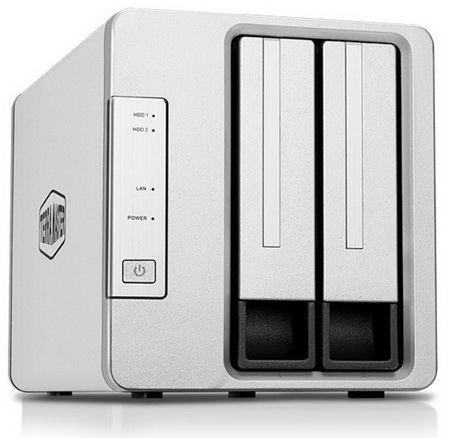
The original concept behind NAS (network attached storage) devices/servers might have been local and even remote file sharing but through the years numerous functions got introduced/added and so today both professionals and regular consumers alike have many reasons to own one. Now as some of you are certainly away performance has always been very crucial with any local network device (NAS servers included) and that's clearly evident by the technological "jumps" we've seen over the years. Just think about it, today we have local network speeds of up to 100000Mbps (100Gb/s) whereas less than 20 years ago 1000Mbps (1Gb/s) was at the top. Things however don't "progress" quite as fast in the consumer market so even the 10Gb/s connection (10GBASE-T was introduced roughly 14 years ago) is still not something we see a lot. Today with me i have a 10Gb/s (10GbE) factory ready NAS device/server by TerraMaster and more specifically their newest F2-422 model.
Founded in 2010, TerraMaster is a professional brand which focuses on storage products, including network attached storage and direct attached storage, which is sold in more than 40 countries and regions. Products of TerraMaster are mainly designed for customers such as small and medium businesses and home users. With its core competitiveness in excellent hardware design and strong software developing ability, TerraMaster aims to provide customers with excellent products that offer reliability and value. TerraMaster has focused on the development of storage technology for many years. TerraMaster continues to explore storage technology and applications, such as how to create more functionality and value to storage products and make storage application easier, more convenient, safer and faster to provide customers with a complete, reliable and trusted data storage solution.
The F2-422 is a dual bay NAS based on the Intel Celeron J3455 quad-core CPU (14nm/1.5GHz Base Frequency/2.3GHz Burst Frequency/2MB Cache/10W TDP) which TerraMaster has paired with 4GB LPDDR3 RAM running at 1600MHz (8GB maximum - can add a 2nd 4GB module) and an 8GB flash memory module. In terms of available connections, The F2-422 comes ready with two USB 3.0 ports, 2 RJ45 Gigabit Ethernet ports, single RJ45 10GbE Ethernet port and an HDMI output (for service purposes). Aside its two 3.5/2.5" SATA II/III bays which can be formatted with the BTRFS/EXT4 file systems and can be set in single, JBOD, RAID 0 and RAID 1 modes the F2-422 is also equipped with a rear 80mm exhaust fan which is responsible for keeping their temperatures in check. As with previous models the F2-422 uses TerraMasters very own TOS OS which at this time has reached version 4.1.30.
SPECIFICATIONS AND FEATURES

PACKAGING AND CONTENTS
TerraMaster is using the same package as in the past so their logo is the only thing printed at the front.
The product name, serial number and barcodes are all printed on a sticker located on the left side.
Just like with previous models the F2-422 is wrapped inside a plastic bag and placed between two foam spacers (the rest of the bundle is placed inside a cardboard box).
The F2-422 gets shipped with its power adapter, two power cords (EU/UK), Ethernet cable, screwdriver, two packs of screws, warranty information paper, HDD stickers and the installation instructions.
THE F2-422
The 1.5Kg heavy aluminum and plastic housing of the F2-422 measures 227mm in length, 119mm in width and 133mm in height.
At the front of the NAS we find the on/off power button and LED, LAN and HDD activity LEDs and two drive trays.
These trays are made out of plastic and can accommodate both 3.5" and 2.5" drives.
At the rear we see the 80mm exhaust fan, HDMI port, two USB 3.0 ports, two RJ45 Gigabit LAN ports, single 10GbE port and the DC in.
The enclosure sits on 4 rubber feet and its base is largely perforated.
With two Seagate IronWolf 12TB SATA III hard disk drives the F2-422 is ready for both 1GbE and 10GbE tests.
SETUP
The easiest way to initiate the setup procedure is to use the TNAS software which detects the NAS on your local network (just double click on it to enter the web GUI).
The welcome screen notifies you that the NAS needs to be connected to the internet to complete the setup procedure.
After that the setup wizard detects the installed drives and performs a quick diagnostic.
You can either choose auto download of the latest TOS (OS) version or download it yourself and install it manually.
It takes roughly 10 minutes to download and install the latest TOS version.
Once that's over with you will need to change the default password and set the time zone and a security email (if you want to).
Last step is for you to create a storage pool and a volume as seen above (in Single, JBOD/LARGE or RAID 0/1 modes).
The entire procedure takes but a few minutes to complete.
TOS 4.1.30 PART 1
The login screen has a dog as its background (can be changed) and since this isn't a professional oriented product i have no problem with that.
The main screen of the TOS OS hasn't really chanced ever since version 3.X (although this time over the changeable theme is a bit strange) so once again from the upper right corner you can logout, change users, change the TOS theme, enter full screen and change the wallpaper while from the lower right corner you can check the current system status.
The top icon is the file manager app which also resembles a lot the ones we find in Windows and Linux (even has thumbnail support).
Support has been raised to include a total of 51 apps (5 of which are in beta) which is a nice increase compared to the 10 back in v3.X (still nowhere close to what QNAP and ASUSTOR have).
The control panel has been redesigned so the main tab includes all sub-tabs as icons.
From the privileges tab of the control panel you can add/remove users, create user groups and setup shared folders.
Moving to the network services tab you can check the current LAN status, enable the various file services, enable telnet and SSH, start the web server and virtual host and you can also enable UPNP discovery (only for devices that support UPNP) and Bonjour.
Inside the storage manager tab, you can check the status of the installed drives (including their SMART info), create/delete storage pools and volumes, enable/disable the virtual disk feature, check external USB drives and enable the hot-spare feature.
TOS 4.1.30 PART 2
From the general settings tab you can adjust the regional settings, choose a fan speed or leave it to auto, enable/disable the HDD standby/sleep function (reduced power consumption), create a power on/off schedule, enable/disable the auto power on feature (handy when the device turns off in case of a blackout), setup notifications, download SSL certificates, setup DoS protection, perform firmware updates, backup/restore settings and restore the system to its factory defaults.
Via the system information you can check the status of the system whether that has to do with its hardware end or with its software one.
Clicking on the backup icon on the main screen allows the end user to access the various backup options which include Rsync and Time Machine.
Finally, you can also enable the remote login feature via TerraMasters TNAS.online service (or via DDNS).
TESTING METHODOLOGY
Originally, we had decided that since some of the NAS servers/devices we've tested in the past are no longer in our possession (naturally) we would keep performing the exact same testing methodology we did in the past for as long as possible in order to provide accurate comparison results. However, since our real-life tests are not enough for some people, we also decided to throw in ATTO V2.47 and Crystal Disk Mark V3.0.4 to cover the more demanding users. However as always we will be using a single Seagate Constellation ES.3 4TB SATA III and up to 10 Seagate IronWolf 12TB SATA III hard disk drives with 3.5” compatible units (we switched to 12TB models for RAID tests since August 2018 – due to high workloads the performance of previous drives had started to deteriorate) and up to two (for now) Enterprise Capacity 2.5 HDD V3 2TB SATA III HDDs with 2.5” compatible units to perform several upload/download tests with 10.9GB (Single) and 40,8GB (RAID) files. Tests are repeated a total of 4 times after which we record the average numbers (from the 4 peak ones) into our charts. The network device used for 1GbE tests is the same Netgear D7800 VDSL Modem/Router we’ve been using lately when performing tests on NAS servers.
* Since the 25th of June 2015 for 10GbE tests we’ll be using a Netgear ProSafe XS712T 10G Smart Switch and an Intel XT540-AT2 10GbE PCIe card (10GbE compatible NAS cards will be provided from each company and stated in each review).
** In May 2019 we also introduced TB3 (Thunderbolt 3) tests using our latest test rig (X299 AORUS GAMING 9 / INTEL CORE I9 7980XE / 64GB DDR4-3200 / GC-ALPINE RIDGE V2.0). For TB3 tests we'll be using ATTO V4.00.02F, Crystal Disk Mark V6.0.2 and Passmark Performance Test V9.1.
*** As of October 2019, we'll also be using the QNAP QSW-804-4C Ethernet Switch for 2.5/5G NAS reviews. The benchmarking programs used will be ATTO V4.01.0F1, Crystal Disk Mark V6.0.2 and several real-world upload/download tests with 30GB (Single Drive) and 60GB (Raid) files.
TEST RESULTS - 1GBE
SINGLE
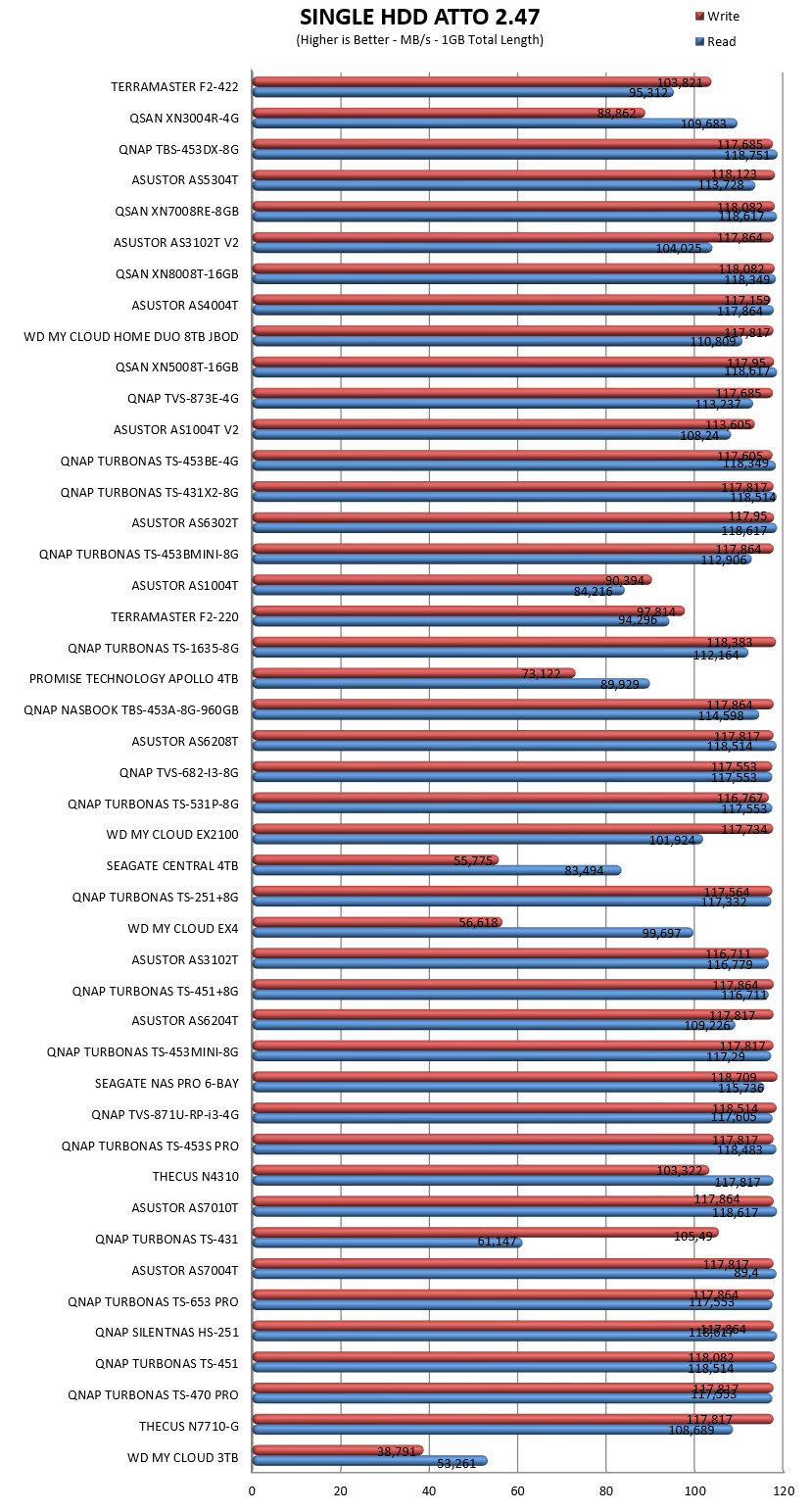


RAID
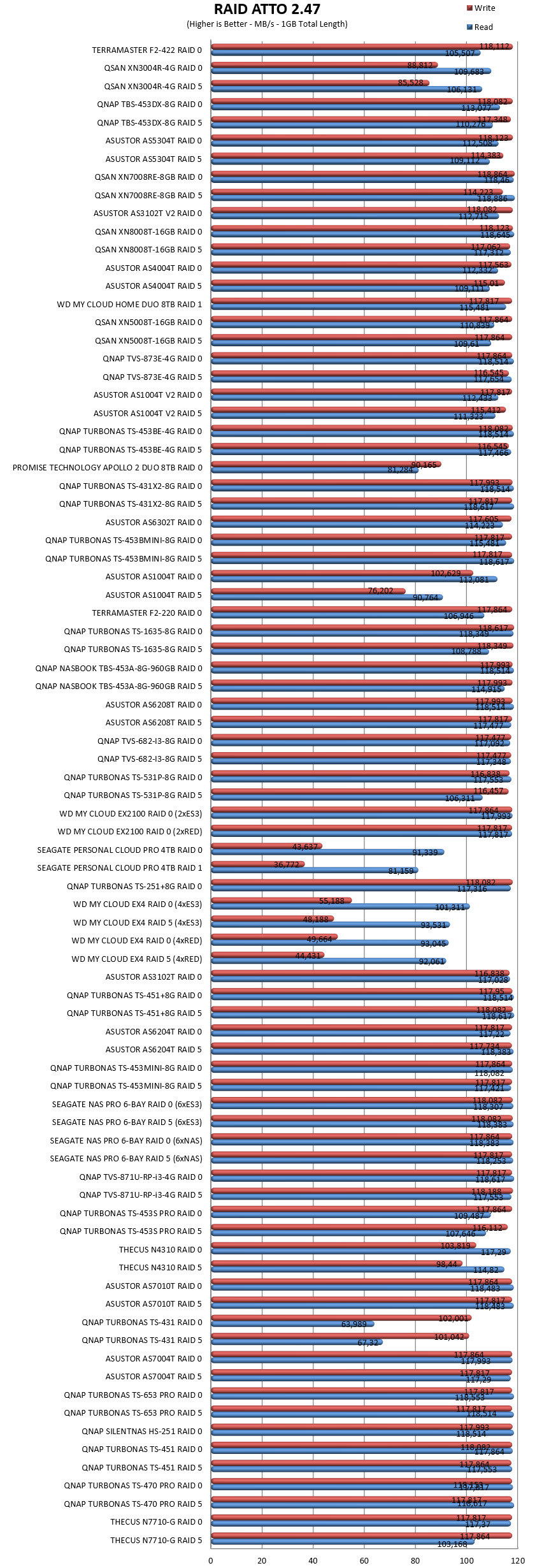
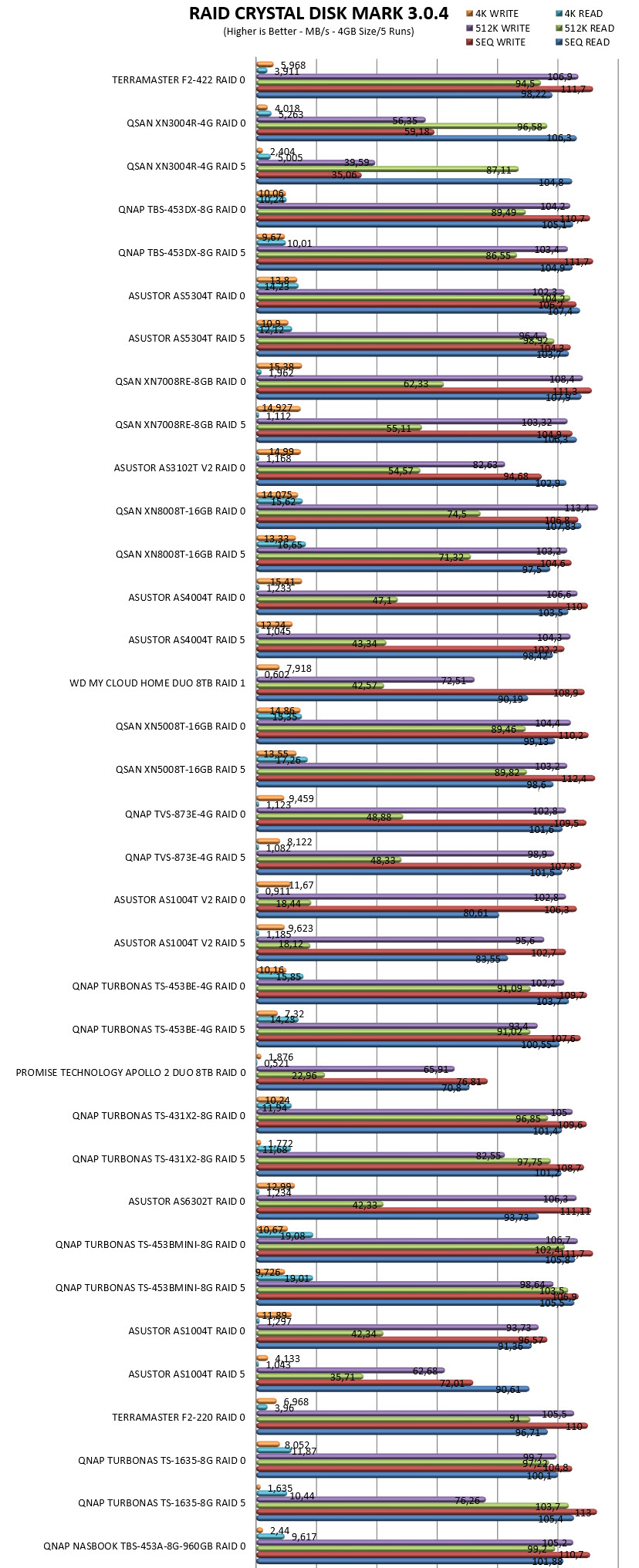

TEST RESULTS - 10GBE
SINGLE
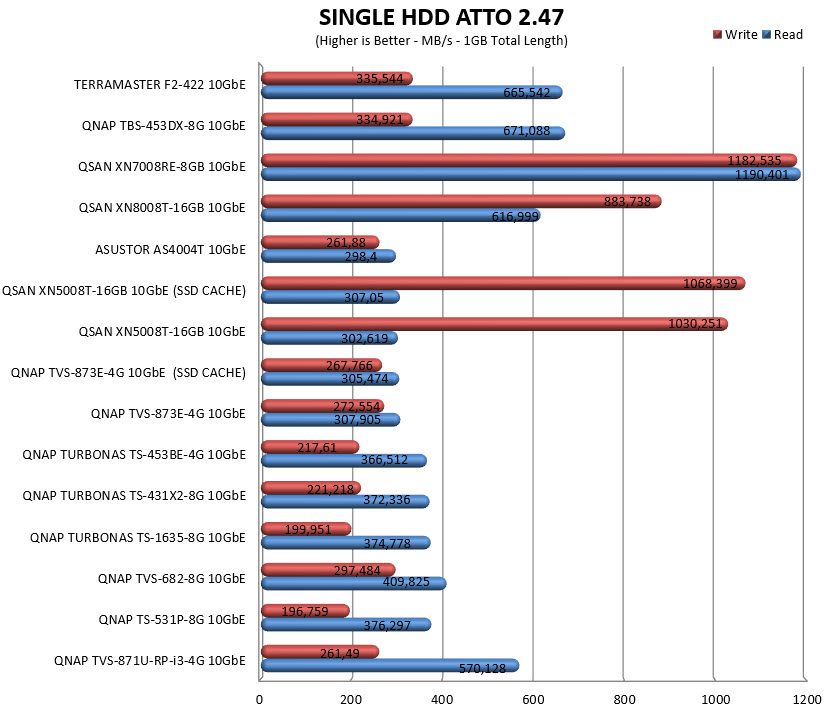
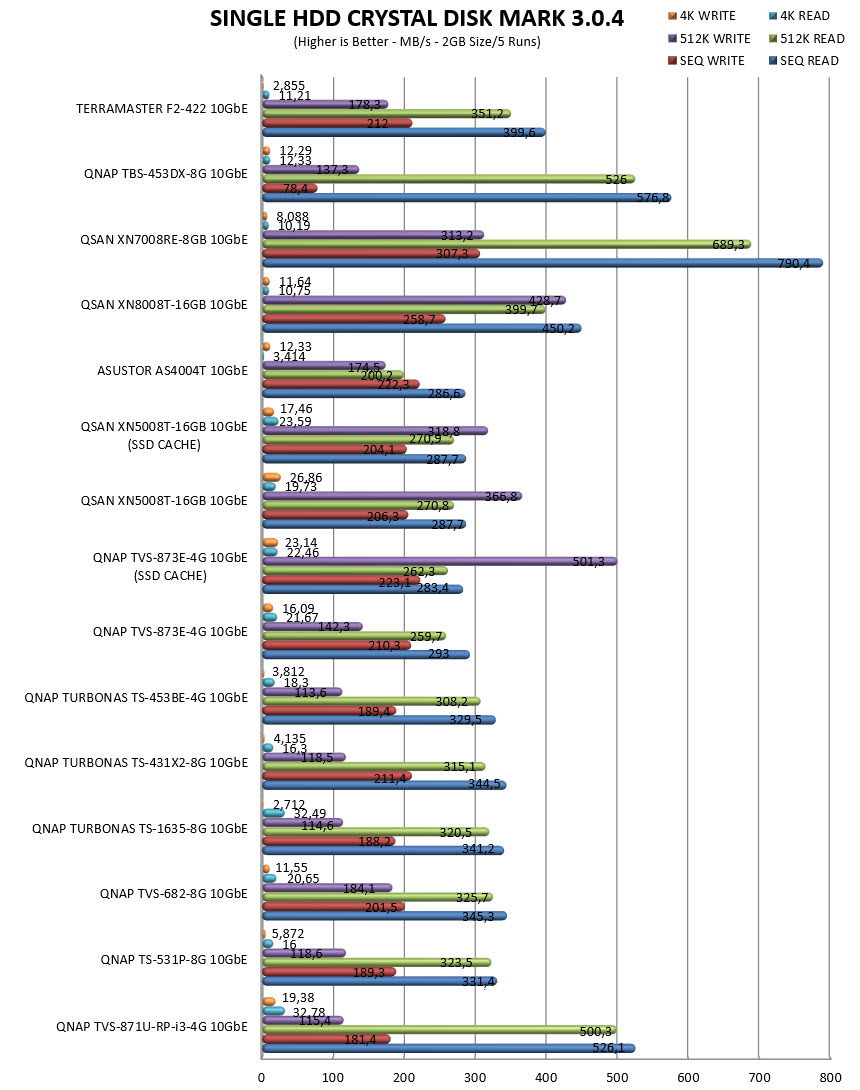
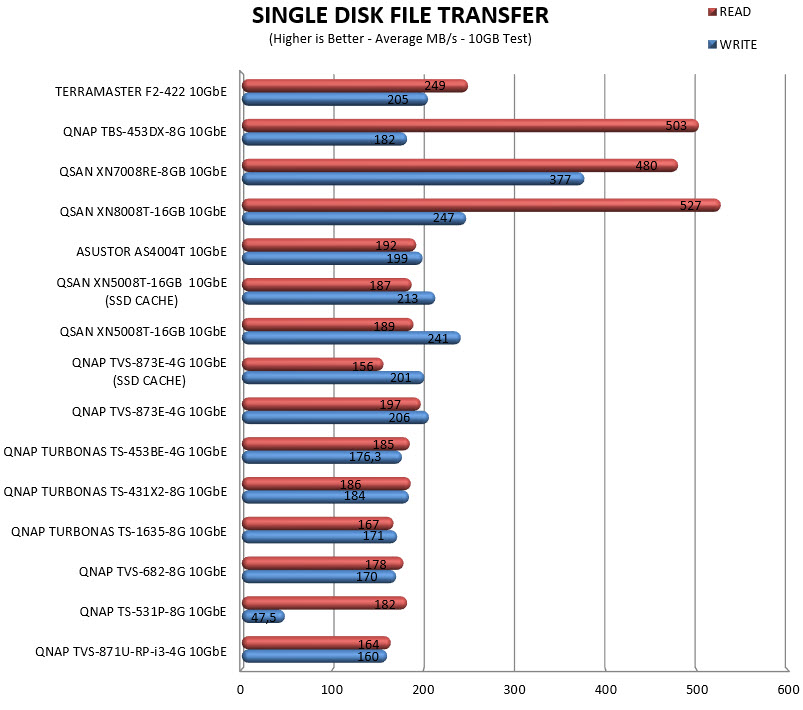
RAID
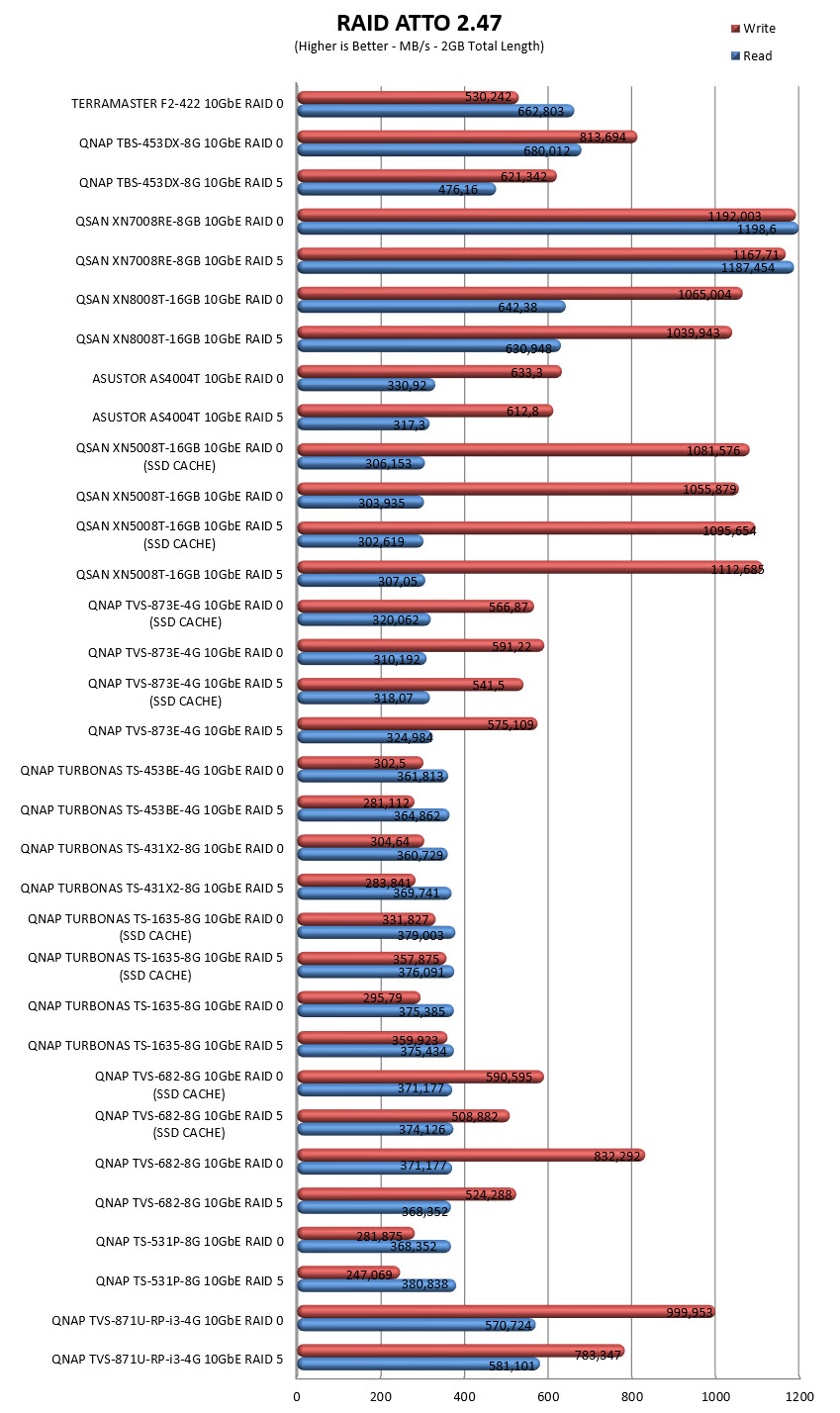
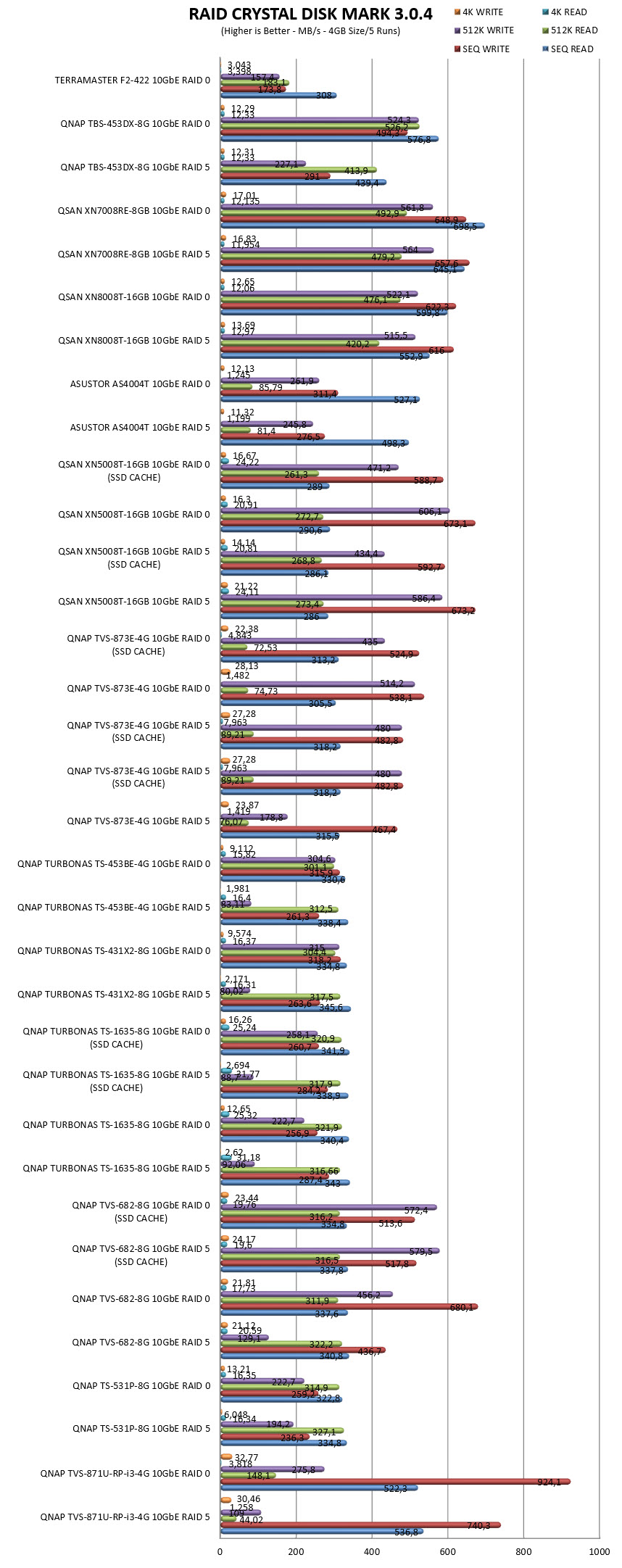
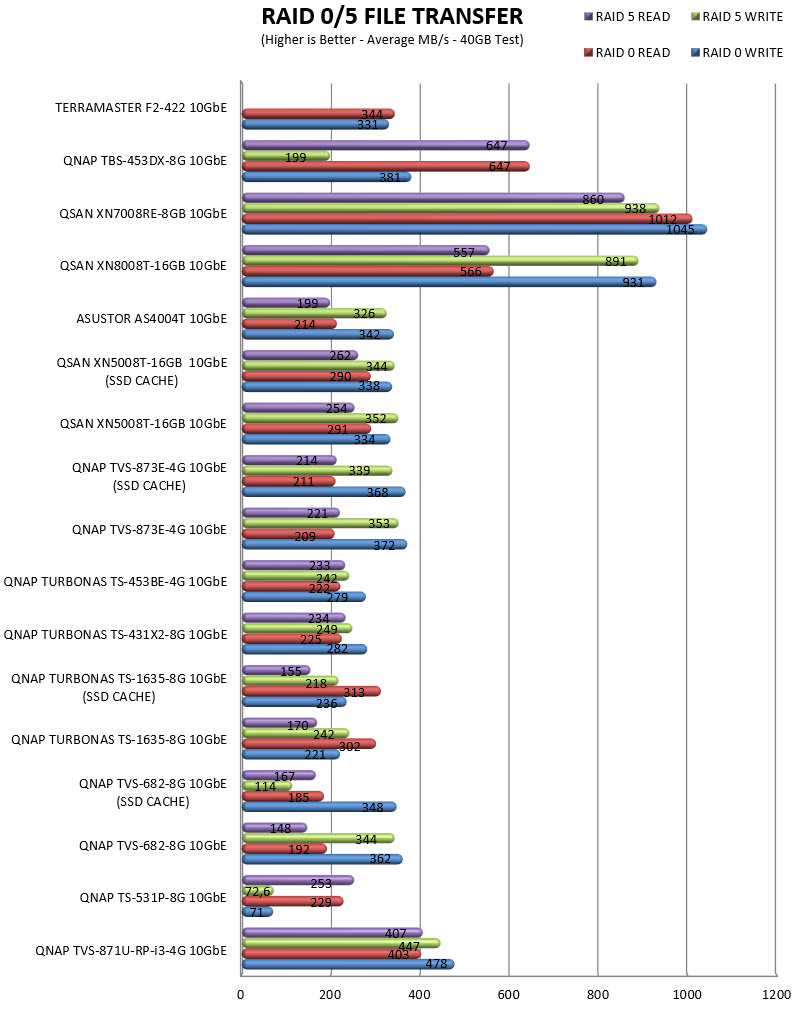
TEST RESULTS – TEMPERATURES / CONSUMPTION / NOISE



CONCLUSION
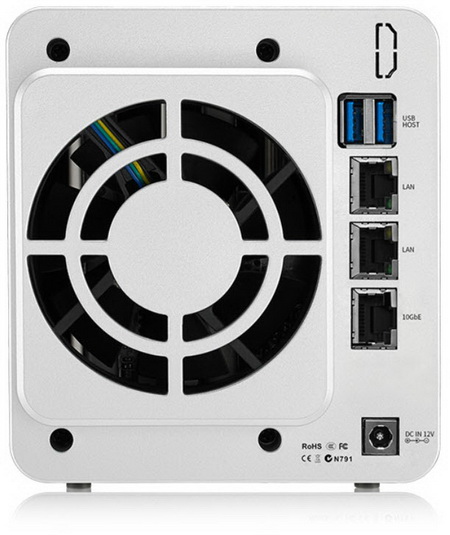
The F2-220 model, again by TerraMaster, which I had the chance to review years ago offered good performance levels and good OS stability but lacked things like a good number of apps along with several software features in regards to network and storage monitoring and control/adjustment. Most, if not all of these might have changed now along with the new TOS version (they were software issues after all) but the F2-422 is not only more powerful thanks to the Intel Celeron J3455 quad-core CPU and its 4GB of LPDDR3 RAM (the F2-220 used a Celeron J1800 dual-core CPU with 2GB LPDDR3 RAM) but it also packs a single 10GbE RJ45 Ethernet port which can be invaluable for some users (especially when used with SSDs instead of HDDs). These all translate to a very substantial performance boost which is hard to get from similarly priced NAS models. Power consumption and noise levels are both at good levels even though due to the plastic (and not aluminum) drive trays temperatures good be better.
The TerraMaster F2-422 NAS currently retails for just USD359.99 inside the USA (Amazon.com) and for just 359.99Euros inside the EU (Amazon.de) and that’s one of its strongest selling points. Not only are you getting a powerful Intel Celeron quad-core based NAS with 4GB or RAM (expandable to 8GB) but it’s also 10GbE compatible. Granted due to its somewhat limited apps compared to the competition it may not be the jack of all trades but it does offer a very good price/performance ratio and for that it gets our Golden Award.

PROS
- Very Good Performance Levels
- 10GbE Ready
- Dual RJ45 Ports
- 4GB LPDDR3 RAM (Expandable To 8GB)
- Low Power Consumption
- Two USB 3.0 Ports
- HDMI Output (Service)
- Single / JBOD / RAID 0 / RAID 1 Modes
- Price (For Some)
CONS
- 10GbE Equipment Costs
- Limited Apps (51 At The Time Of This Review)
- Plastic Drive Trays (Temperatures)

 O-Sense
O-Sense





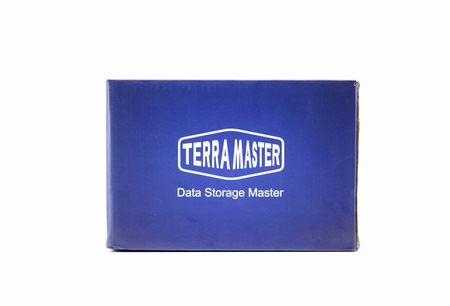
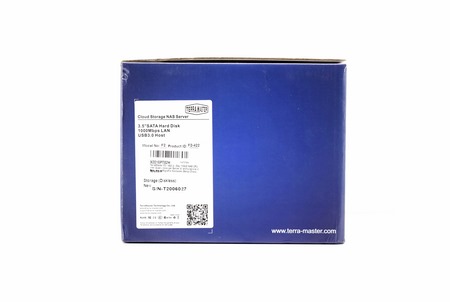
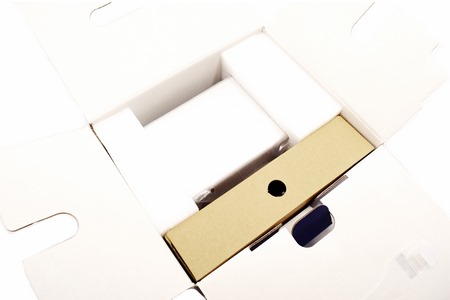
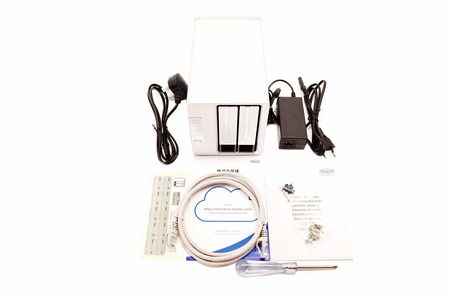
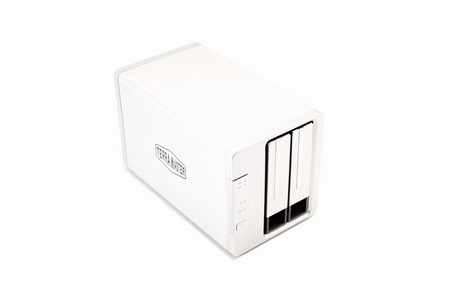
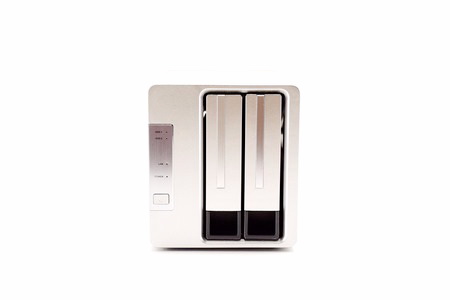
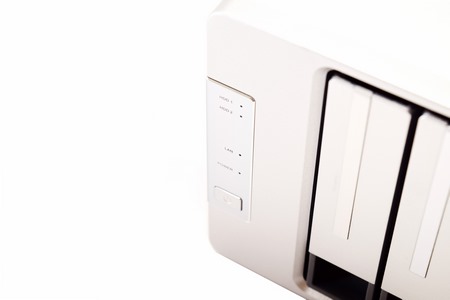
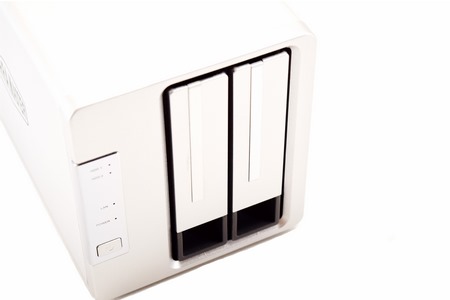
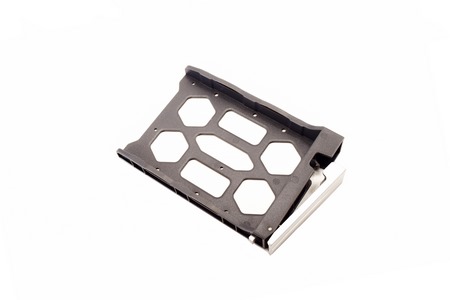
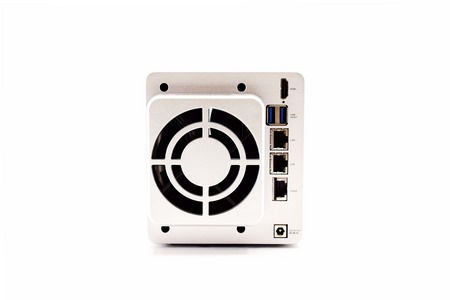
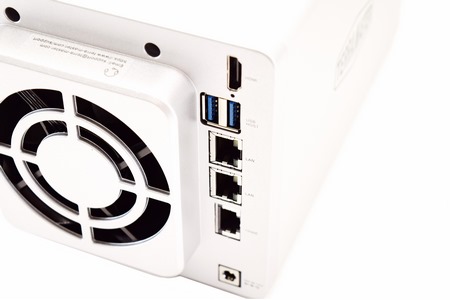
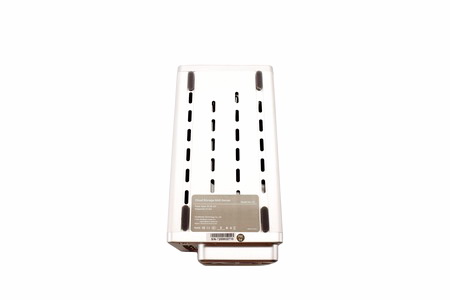
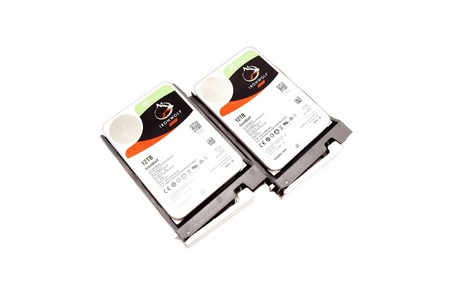
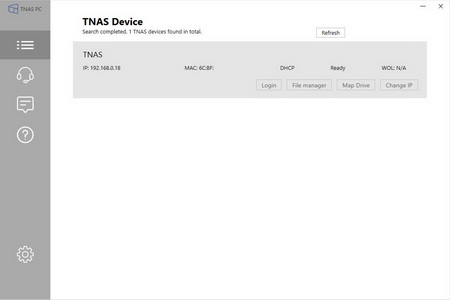













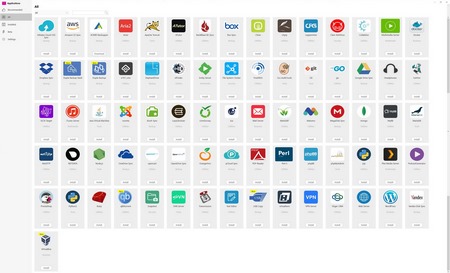

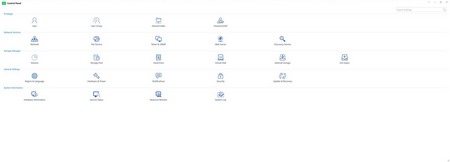


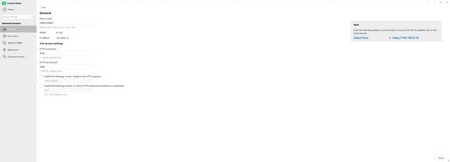
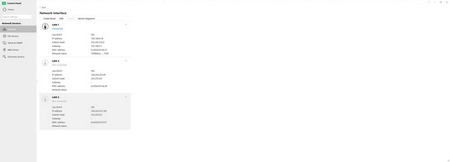

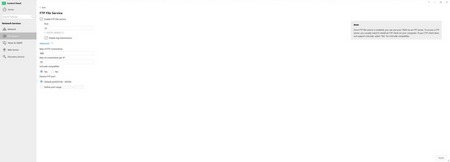
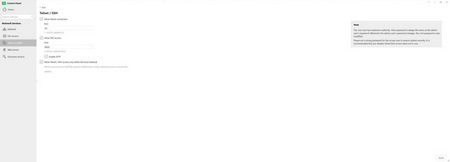



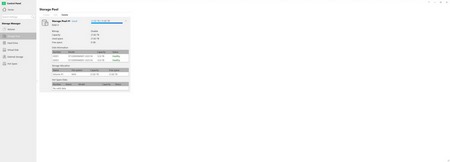





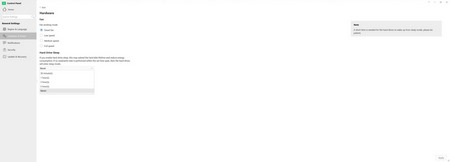
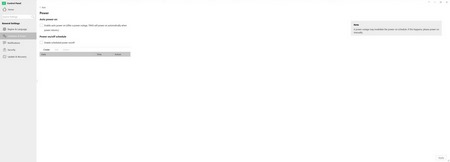





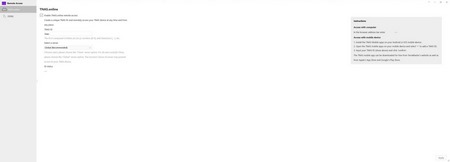


.png)

